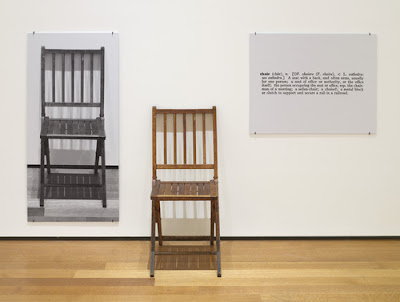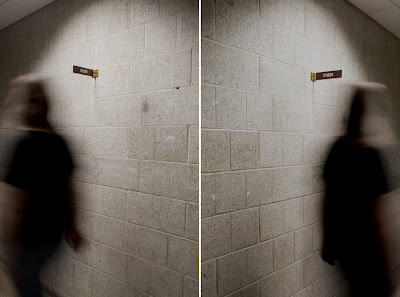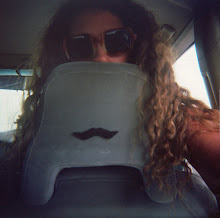The “most-remembered” commercial that aired during the 2010 Super Bowl didn’t flaunt sexy women in bikinis or use computer-generated imagery or effects. In fact, it used hardly any imagery whatsoever. It simply showed text being entered into a Google search bar. The words and phrases appeared on the screen as though a person were typing them in – “study abroad paris”, “impress a French girl”, “long distance relationship advice”, and finally “how to assemble a crib” – and suggested a narrative that viewers were asked to construct word by word in just 52 seconds. This critically acclaimed ad cost Google more to air than it did to produce, but its astounding popularity and effectiveness are telling indicators of the power of text as a visual medium.
In this paper, I will explore how the use of text in time-based and interactive sculpture can give viewers the authority to construct a work’s meaning both individually and collectively, using my own artwork as primary examples. My work asks viewers to wonder about questions such as “what is the length of now?” and “what is the size of here?”. I utilize words that have more than one meaning (such as ‘now’ or ‘then’), or words whose meaning is so abstract that their definition amounts to almost nothing (such as ‘eternity’ or ‘wonder’). I invite viewers to construct their own understanding of those words through time-based objects and/or physical interaction.
Works such as The Length of Now (2008) and Eternity (2010) will be placed in an art historical context by comparison to Joesph Kosuth’s One and Three Chairs (1965). Kosuth’s work will be used to illustrate Conceptual Art’s longstanding interest in the close relationship between language and image. It will also be used to demonstrate how a verbal description of ‘chair’ offers a viewer more room for interpretation than the image, which is very specific and leaves little to the imagination.
(Pictured above: The Length of Now, 2008)
(Pictured above: Eternity, 2010)
(Pictured above: Joseph Kosuth's One and Three Chairs, 1965)
Similarly, On Kawara’s “Date Paintings” (the Today series) will be used to exemplify how the meaning of text is largely determined by time and place (less specifically referred to as context). A work’s meaning during the time and place of ‘fabrication’ (which is another word that has a wonderful dual meaning) can be very different from a viewer’s experience and understanding of it at the time and place of its exhibition. Between Now and Then (2008) demonstrates how the meaning of such words is determined by a viewer’s position in space – ‘then’ can refer to both the past and the future.
(Pictured above: On Kawara's 19 February 2006, from Today series, 2006)
(Pictured above: Between Now and Then, 2008)
My interactive sculptures, The Ecstasy of Influence (2010) and Wonder (2011), will be used to illustrate the concept of intersubjective encounters as posed by Nicholas Bourriaud in Relational Aesthetics. Both of those works require the participation of more than one person in order for meaning to be constructed. One must be the ‘maker’ (or performer) and the other must play the role of the ‘viewer’. Because of this, meaning is elaborated collectively as opposed to individually.
(Pictured above: The Ecstasy of Influence, 2010)
(Pictured above: Wonder, 2011)
(Pictured above: On Kawara's 19 February 2006, from Today series, 2006)
(Pictured above: Between Now and Then, 2008)
My interactive sculptures, The Ecstasy of Influence (2010) and Wonder (2011), will be used to illustrate the concept of intersubjective encounters as posed by Nicholas Bourriaud in Relational Aesthetics. Both of those works require the participation of more than one person in order for meaning to be constructed. One must be the ‘maker’ (or performer) and the other must play the role of the ‘viewer’. Because of this, meaning is elaborated collectively as opposed to individually.
(Pictured above: The Ecstasy of Influence, 2010)
(Pictured above: Wonder, 2011)














No comments:
Post a Comment